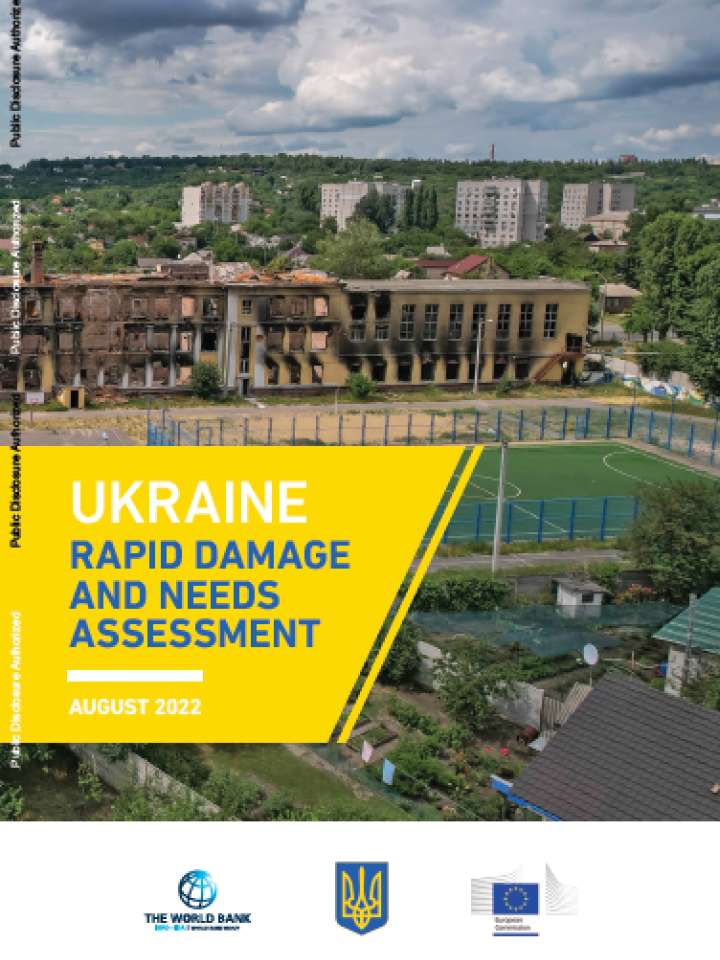Ukraine Rapid Damage and Needs Assessment (August 2022)
This assessment is part of an ongoing effort to take stock of Ukraine’s damage and losses from Russia’s invasion and it aims to assess the scale of economic and social needs for Ukraine’s survival during the war and it's prosperity afterward.
Following an internationally accepted methodology, the RDNA aims to assess the impact of the war on the population, human development, service delivery, physical assets, infrastructure, productive sectors and the economy. For the purpose of this assessment, damage from the war between February 24 and June 1, 2022, is included, verified to the extent possible, and assessed. The RDNA results are preliminary, and damage, losses and needs should be considered as minimums. As the war continues, the social and economic impact will further increase and intensify. However, there is a need to start reconstruction and recovery now where it is safe and practical to do so.
As of June 1, 2022, direct damage has reached over US$97 billion, with housing, transport, and commerce and industry being the most affected sectors. Disruptions to economic flows and production, as well as additional expenses associated with the war, are collectively measured as losses
and amount to some US$252 billion. Ukraine’s Gross Domestic Product (GDP) shrank by 15.1 percent year over year in the first quarter of 2022, and poverty is expected to increase from 2 to 21 percent (based on the poverty line of US$5.5 per person per day).
Reconstruction and recovery needs, as of June 1, are estimated at about US$349 billion, which is more than 1.6 times the GDP of Ukraine in 2021. Integrated into these needs are critical steps toward becoming a modern, low-carbon, disaster- and climate-resilient, and inclusive country that is more closely aligned with European Union standards. While the financing envelope is overwhelming, experience from other countries shows that reconstruction spans many years and a phased approach to reconstruction is critical. The report also details some US$105 billion needed in the immediate and short term to address the most urgent needs.
Explore further
